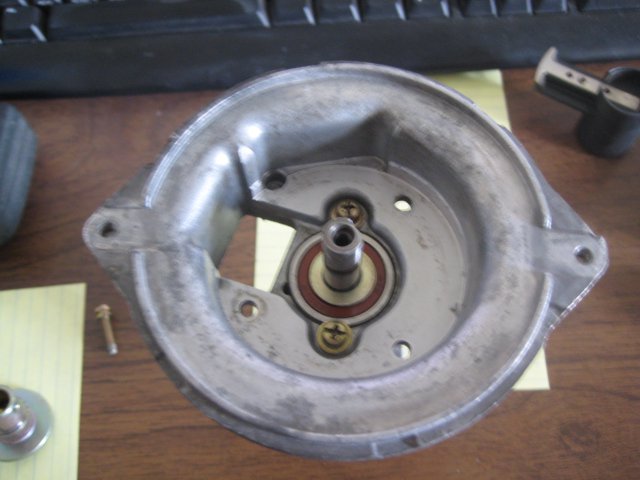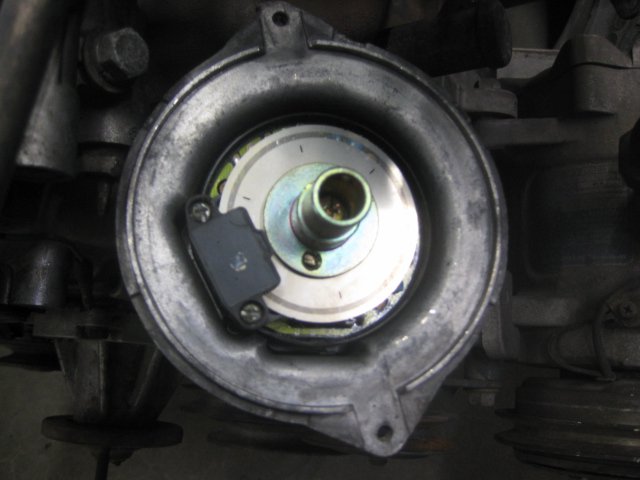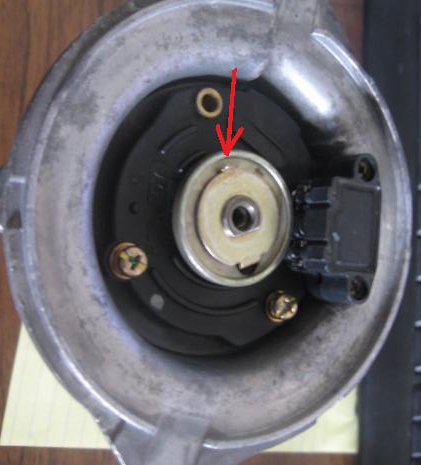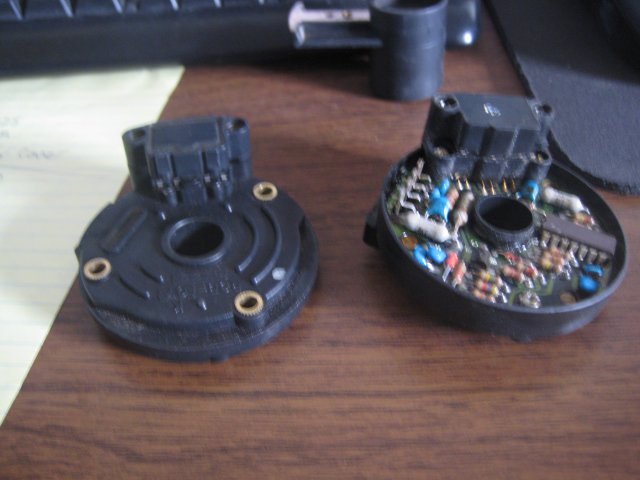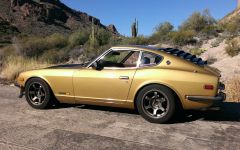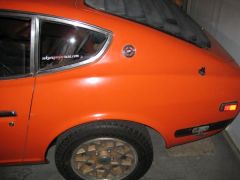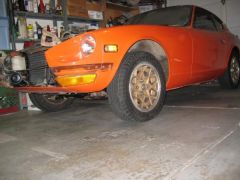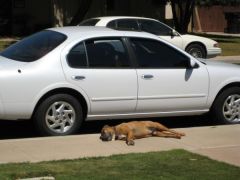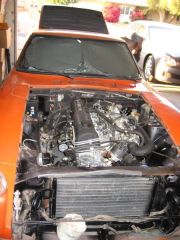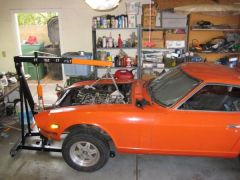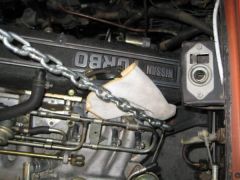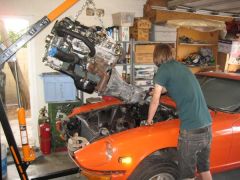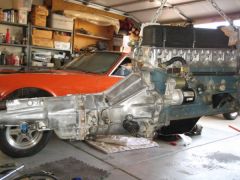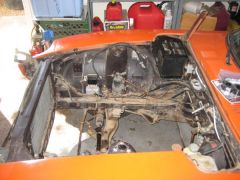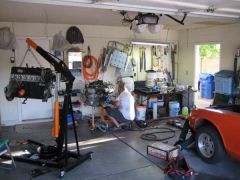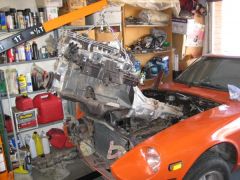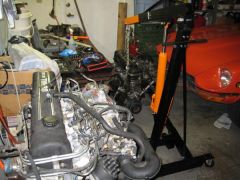-
Posts
675 -
Joined
-
Last visited
-
Days Won
9
Content Type
Profiles
Forums
Blogs
Events
Gallery
Downloads
Store
Everything posted by cgsheen
-
Bingo. Always start by checking & cleaning the electrical connectors & checking the wiring. Run through the ECCS component tests in the 1982 or 1983 Factory Service Manual. You'll be able to test the components and the wiring (harness) back to the ECU if you follow the troubleshooting tests. Another common problem on a high-milage AFM is a hesitation, bog, stumble at "cruising speed" - usually around 2500-3000 RPM. More than a few threads on the interweb discussing the issue. You might check to see if your AFM has been opened - BUT - don't "adjust" it yourself! Verify every other part first, check and clean all of your connectors, check the wire and wiring. Post your progress, put up some pictures.
-
Sounds electrical to me. Have you checked and cleaned all of your electrical connectors on the EFI harness? You may want to grab the FSM and go through the EFI components testing. It's not hard, simple tools and an inexpensive multimeter is all you need. 28-30 should be about right for idle fuel pressure. 40 is probably a little high unless you've got 4 pounds of boost. Should run about 36.3 PSI MINUS whatever the vacuum on the intake manifold is at the time.
-
Stop! If you haven't already, get the '88 FSM EFEC Section from nicoclub.com/fsm EF&EC-11 shows the circuit diagram for the Z31 ECCS. Pin 5 is NOT IGN ON. Pin 5 is output to the Ignitor (Power Transistor) - same as on the L28ET ECCS so leave it alone! You need a better drawing or comparison chart for the pinout differences in the 2 ECUs... What have you re-wired already?
-
The L28ET doesn't really use the O2 sensor to the same extent a more modern engine does. It runs off of it's "base map" more than you would think and really only polls the O2 sensor when you're cruising. It only uses it for "closed loop" operation and there are very specific "requirements" - they're listed in the FSM. It's never using the O2 sensor when you're idling (anything under 1500RPM), or under load (acceleration), or over 3500 RPM, it won't even start polling the O2 sensor until the CHTS is over a certain temp... I'm pretty sure you're correct about the AFM though. Folks just can't leave them alone - for some reason...
-

HELP On My Own 1973 Body Harness Near Completion
cgsheen replied to mainboyd's topic in S30 Series - 240z, 260z, 280z
The big White & White/Red are main power connections (+12V). Refer to the circuit diagram as to how they connect. The additional wiring that goes past your left-side lighting & horn end up at the coil / ballast / distributor / water temp sender (don't remember what all) - All that should be in the circuit diagram as well. The long wires on the top of your picture probably cross the firewall to the windshield washer motor? and the brake switch? -

Turbo dizzy disassembly - have questions
cgsheen replied to 2eighTZ4me's topic in Ignition and Electrical
The shaft is in a bearing that's fairly tight and secured by 2 screws under the optical unit. You don't need to remove that to replace the optical unit. (In fact, you need to remove the optical unit first to remove the shaft) If you ever need to remove the shaft, you may need to press it out - after you remove the retaining screws. On the stock dist. the optical unit should be fairly easy to get to. Once the rotor and metal cover plate are off, you should see this: The center screw needs to come out and then everything should lift off the center post. It's a tight fit on most of these parts - I should say snug - but it all should come apart with a little wiggle. There's the big "top hat" thing on the top, the optical disc (chopper wheel), and a tabbed washer for alignment, and a spring washer - then the base of the optical disc assembly. The base is not keyed and it just slides over the shaft - if that's what you're having trouble with, it's just "gooped up"... Penetrating oil? Laquer Thinner? Hold the bottom of the shaft and try to twist it and lift up as you're twisting. Again, a snug fit, but it just slides over the shaft and it rests on the bearing sleeve underneath. Stock, the optical unit is held in by 3 screws at the bottom of the dist. Some have been replaced by a later design. The originals have no cover, the electronics are protected by a thick layer of resin over the top and you can see the components. The later design has a plastic shell over the whole module and 3 bolt holes to secure it. You can use either version (the later version of the optical module is used in all the VG30 dist type Maxima's, M30's, and Z31's - you can transplant an optical module from any of those cars into your L28ET distributor) Hope this helps. -

So Cal Wiring Guru Needed! L28ET Wiring
cgsheen replied to ~KnuckleDuster~'s topic in S30 Series - 240z, 260z, 280z
Several years ago I got that in a fortune cookie: "Patience is the key to joy" Unfortunately, it's true... -

So Cal Wiring Guru Needed! L28ET Wiring
cgsheen replied to ~KnuckleDuster~'s topic in S30 Series - 240z, 260z, 280z
Ya, you're boned... That's gonna take even an experienced L28ET swap guy some time and effort to straighten out. There are multiple modifications to stock so you're going to need a good knowledge of the stock system(s) to figure out what's been altered and - A. how to make it work OR B. how to get it back to stock. Unless you find someone stupidly helpful, it's probably going to take a lot more than beer and gas money - no way I'd touch it for that (but then, I don't drink)... Unless you knew a LOT about the stock harness (and how to repair and rebuild it), I'd say ditch that hacked harness - rip it out, get an unmolested stock harness and start from scratch. Your life will be easier. -
Or if the bushing(s) on the TC rod are gone. My bet is on the left side lower valence...
-
Just about everyone reporting doing that test seems to get something in the low-to-mid 200's rather than the 420 or so the FSM says it should have... If the cover has been taken off the AFM and the glue blobs on the screws inside are broken, then someone has probably tried to "adjust" the AFM. ROOKIE MISTAKE! The AFM is the LAST thing you should ever screw with - and you should never screw with it until you know everything there is to know about Bosch L-Jetronic and their AFM design. So, basically it shouldn't be touched and it's the first thing people seem to go to, fiddle with, and totally screw up. There is a way to "re-calibrate" the spring setting (after-a-fashion), bit you've got a lot of thread searching and reading to do. Just so you know - proper first steps: - download the FSM(s) (use the '82 FSM if the ECCS troubleshooting steps in the '81 turbo supplement aren't clear to you - same, same - just no dropping resistors on the injectors and your CAS is external, not in the dizzy) - There can't be any vacuum leaks or split intake boots on an L28ET - Ignore the parts in the FSM about using an ECCS analyzer, go to the section that tells you how to test ALL the ECCS components with an electrical meter and a pot of hot water. - TEST every component except the AFM using the information in the FSM. - Repair or replace every component that doesn't test properly (including wiring and electrical connectors - clean every connector - then clean it again) - Know that if you've changed, deleted, or ignored any of the ECCS components listed in the FSM and shown in the various diagrams, the engine is not going to run like the FSM says it should run. - Once you know everything else is perfect, and it still runs like a pig, search for the AFM calibration thread (way old but fairly famous) OR find an unmolested AFM (I'm giggling to myself as I type that - it's like finding a Unicorn...), OR do the smart thing and ditch the stock ECCS and get a good engine management system... If I had all the hours back that I spent fiddling with the stock ECU, harness, and parts - I could build another Z.
-
There's something else that's just not quite right here. 91 degrees?? He's got hood vents - or should have on his '78. Guess what temp it is here in Phoenix (we're WISHING it was only 91...) I've got no "hair dryer" on my turbo engine and it doesn't vapor lock to the "it won't start again until it cools off" point. I daily drive Goldie no matter what the temp outside is, and ya, my A/C is running full bore. IMO fuel prime is a necessity, the hair dryer ("injector fan" or auxilary air fan) is a band-aid (may help and will only hurt if it's just covering up the real problem). The OP needs to find the ACTUAL problem and get it taken care of. Unless he's just being really nervous, an EFI Zcar shouldn't "not start" for 30 minutes after driving around in the "91 degree heat"... (sorry for the scoff - we get a little testy in the desert this time of year )
-
The Black/Yellow from the IGN switch is the start signal (tells the starter to turn and crank the engine). Is that the "Yellow" you're referring to? The "start signal" to the ECU? If so, it should NOT be connected to the Black/White. The Black/White is the IGN ON signal and it provides power (+12V) to the Ignitor (and from the Ignitor to the coil) and to the EFI Relay. That's in the wiring diagram above. (and, there's a connection to "plug 3" which also powers the air bypass valve and the CAS IIRC - but that's in the turbo circuit diagram in the Factory Service Manual - your best friend...) If you have a 1981 ECCS (engine, EFI) harness you need the dropping resistor pack plugged in. If you don't the injectors have NO power. Easy to check voltage at the injectors.
-

280z Windshield. Must be willing to package well and ship to FL
cgsheen replied to redlinevo7's topic in Parts Wanted
A half-way competent glass man in your area can get you a windshield for a Z and install it for $200 or so... Why would you want someone to ship it to you. They're readily available and you can get them either with a darker tinted strip across the top or just with the regular tint (no strip across the top).- 10 replies
-
- windscreen
- glass
-
(and 1 more)
Tagged with:
-

Upper Wiper Cowl / Top Grille Removal
cgsheen replied to TieFighter88's topic in S30 Series - 240z, 260z, 280z
There is no other flange on the cowl to put a screw through - not in a hidden location anyway. It's just the flange in front and the mounting tabs (that poke out the back) that normally fit into the plastic bits under the windshield. Every FSM from 70-78 literally says: "Remove the screws, pull the cowl forward" to remove. Now what other people may have done to the cowl over the years is a different story. (Or, are the tabs on the back of the cowl just painted over so heavily that they're "glued" to the windshield frame...) -

Upper Wiper Cowl / Top Grille Removal
cgsheen replied to TieFighter88's topic in S30 Series - 240z, 260z, 280z
Nope, just 4 phillips head short little screws across the front close to the firewall (usually rusted in so they're hard to turn out), then it's just lift the front up enough to clear and pull forward to remove the stock cowl. -
A Tach from any model Z that had an electronic ignition module will work without modification on the L28ET. I know my '74 260Z Tach worked "out of the box". All the 280 Tachs are the same. IDK about the '73. But, you can tell if it's a curent sensing Tach by looking at the back. If it has a 4-wire connector with "two whites" (really just one wire that's looped) that loop on the back of the Tach, it's current sensing. The later Tachs used with electronic ignitions are 3-wire...
-
Well, that sounds right... Yellow on the L28ET harness (female bullet (in it's stock form) up near the CAS connector) runs to "connector (plug) 3" that comes out of the stock ECCS harness near the ECU. Run the Yellow from there into the Temp Gauge signal wire in the dash harness. You're sure it's connected to the temperature sender, not the thermotime switch? (didn't buy a thermotime switch instead of a temperature sender did you?) Just a thought... Easy to test. The sender will show resistance if you connect an Ohm meter between the post (male bullet) and the body or the tstat housing. The thermotime switch will show an open circuit if you do the same thing. It's a switch that's only "made" if that sensor is really hot. Your swap probably has no use for the thermotime switch unless you're using the aux. cooling fan ("hair dryer") and it's controller on the injectors. Oh, the FSM shows the resistance values for specific temperatures and how to test the temperature sender.
-
Yup. For that one anyway...
-
Didn't think that would help much, my "fuel pressure lecture" above was a "stop the misinformation!" comment (OK, rant...) not a "there's your problem" comment. (I guess I should start labeling them as such...) Go back to my first paragraph. When an L28ET ECU is getting all the information it needs, it'll make the engine purr like a kitten. (another disclaimer: here I'm also making the assumption that all the mechanicals in the engine are within stock specifications to begin with...) Don't over complicate it - each one of the sensors I mentioned above is fairly easy to re-test. The rest of the ECCS tests are pretty simple too. Go back through the FSM. And now for something completely different: Are you beginning to understand why I suggested that you just go ahead with the Z31 ECU swap from the get-go? This time spent on trouble-shooting the stock ECCS could have been used to - well, you see where I'm going... When you do the Z31 swap, you'll be re-visiting much of this. Exactly why I wish I'd just done my Infiniti M30 ECU / MAF swap when I FIRST put the turbo engine in. The only positive side to my stock L28ET ECCS experience is "the knowledge I've gained" - sigh...
-
Sounds like a plan.
-
OK tooquick, back to the FSM. You already know when the ECU "uses" the stock O2 sensor (hint: ONLY when it's trying to get into closed loop mode and that's only when you're cruising. Go back and read my previous explanation or the FSM - you know this, don't get confused by other comments...) The ECU is working off the base map when you're under load or in boost (as in: couldn't give a rats a$$ what the O2 sensor is doing) so it must not be getting the info it needs from other sensors. Could be sensor, connector(s), or wiring. (important stuff: Intake air temperature (AFM), AFM position, TPS (needs to know throttle is open), CAS (both 60 & 1 degree signals), CHTS...) (Most of the problems I had with the stock harness were actually at the ECU - the pins on the ECU, & the sockets. The 280ZX had a wonderful habit of leaky windshield. The placement of the ECU was right under the bottom left corner where the windshield leak would drip right on top of it. SO - my ECU and harness plugs were super corroded - fought with them for months! When mine "farted, choked, and stalled" I'd jiggle the wires going to the ECU to make it straighten up again. Moral: don't trust any of the electrical connectors on these 30+ year old harnesses) Fuel Pressure - sigh - go back to the FSM. (everyone that's sick-and-tired of me saying this over and over raise your hands. Ok, all of you can skip over the next paragraph...) Fuel pressure is not a static (constant) value. The FPR is supposed to maintain a 36.3 PSI differential between fuel pressure and manifold pressure. If your manifold is in vacuum (which it should be much of the time, and definately when at idle), your fuel pressure should be less than 36.3 PSI by the amount of vacuum. For example: IF your intake manifold was at -5 PSI (5 pounds of vacuum), fuel pressure should be reduced by 5 PSI (36.3 - 5 = 31.3). IF your intake manifold was at 5 PSI boost (5 pounds of positive pressure), fuel pressure should be increased by 5 PSI (36.3 + 5 = 41.3). This is explained in the FSM - even has a little chart showing fuel pressure relative to manifold pressure. Is your fuel pressure at idle really 38 when it probably should be closer to 28-30? Check your plugs. Are they sooted up - black?
-

No spark, no injector pulse, z31 ecu/maf turbo'd 78z
cgsheen replied to noelawinslow's topic in S30 Series - 240z, 260z, 280z
Sounds like you may need to "unclean" some of that wiring you cleaned up... Go back over what you did. The CAS signal wires can be tested by pulling the distributor and spinning it by hand (IGN ON, all wiring still attached - has to have power and GND for the optical module to work...) If nowhere else, you can find the test procedure in the 1991 1992 Infiniti M30 FSM. The injector is a coil (an electromagnet) it has battery voltage on one side continually. The ECU will "pulse" a GND on the other side to make the electromagnet work. The injector opens and it squirts fuel. Because it's a coil, the source voltage will just pass right through it from one side to the other. That's why you will see +12v on BOTH sides if the connector is attached. The GND is only activated for milliseconds BY the ECU when the ECU wants the injector to open. Melted wiring is never a good sign. Find out why they heated up. tooquick: don't look for problems you don't have... -

